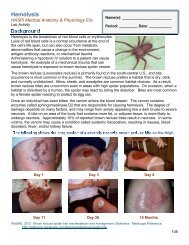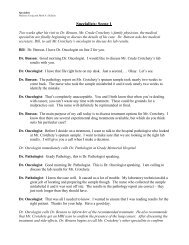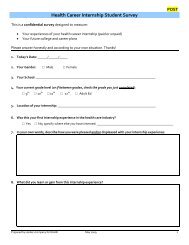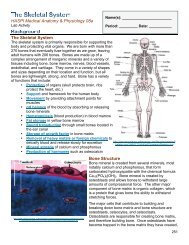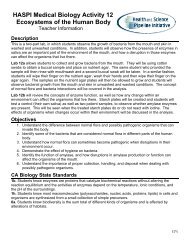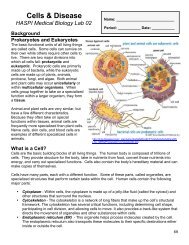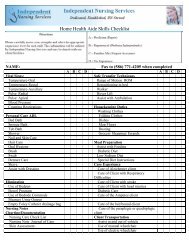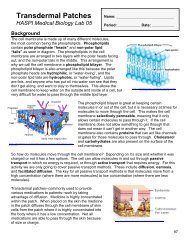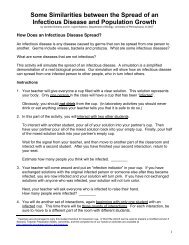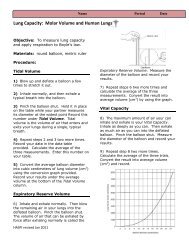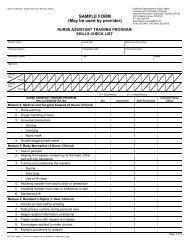You also want an ePaper? Increase the reach of your titles
YUMPU automatically turns print PDFs into web optimized ePapers that Google loves.
Name: __________________________________________ Date: ___________ Period: _________<br />
PART C: Fat <strong>Digestion</strong><br />
In part C the corn oil represents the lipid polymer, and lipase is the enzyme responsible for breaking<br />
the lipid down. A change in pH will demonstrate that the enzyme is active. The soap works similarly<br />
to bile, and will break up the oil so lipase can work more easily.<br />
1. Using a pencil, label wells 1-3 on the spot plate.<br />
2. Add 10 drops of water to wells 1-3.<br />
3. Add 3 drops of Corn oil to wells 1-3.<br />
4. Use separate stirring sticks to mix each well thoroughly.<br />
5. Use the forceps to dip a separate pH strip into each of the wells 1-3. Compare the color<br />
change of each strip to the pH strip chart to determine the pH of the mixture in each well.<br />
Record your results in Data Table 3.<br />
6. Add 5 drops of lipase to well 2 and 3.<br />
7. Add 2 drops of liquid soap to well 3.<br />
8. Re-stir the mixture in each well, and allow them to sit for 20 minutes.<br />
9. Retest the pH and record your results in Data Table 3.<br />
10. Record your observations of each of the mixtures in Data Table 3.<br />
11. Rinse out your spot plate and dry it off with a paper towel.<br />
PART D: Testing for Macromolecules in Food<br />
In part D you will be performing portions of the tests from parts A-C to determine whether your food<br />
sample contains proteins, carbohydrates, and/or lipids.<br />
1. Choose a food item that is easily mixed with water.<br />
2. In a beaker, mix a small amount of your food sample in 10 ml of water. If the food sample is<br />
solid it will need to be thoroughly smashed.<br />
3. Using a pencil, label wells 1-5 on the spot plate.<br />
4. Add 5 drops of your food sample mixture to wells 1-5. Well 1 will act as the control.<br />
5. Use the forceps to dip a separate pH strip into each of the wells. Compare the color change of<br />
each strip to the pH strip chart to determine the pH of the mixture in each well. Record your<br />
results in Data Table 4.<br />
6. Test your food sample for protein by adding 5 drops of pepsin and 5 drops of HCl to well 2.<br />
7. Allow well 2 to sit for 5-7 minutes, then add 2 drops of Biuret. The mixture will turn pink if<br />
protein is present. Retest the pH of well 2. Record the results in Data Table 4.<br />
8. Test your food sample for carbohydrates by adding 5 drops of amylase to well 4.<br />
9. Allow well 3 and 4 to sit for 5-7 minutes then retest the pH of wells 3 and 4.<br />
10. Add 1 drop of potassium iodine to well 3 and 4. The mixture will turn blue-black in the<br />
presence of starch. Record the results in Data Table 4.<br />
11. Test your food sample for lipids by adding 5 drops of lipase and 2 drops of soap to well 5.<br />
12. Allow well 5 to sit for 20 minutes, then retest the pH of well 5, and record the results in Data<br />
Table 4.<br />
Adapted from Neo/Sci Food <strong>Digestion</strong> Lab Activity 2011 238



